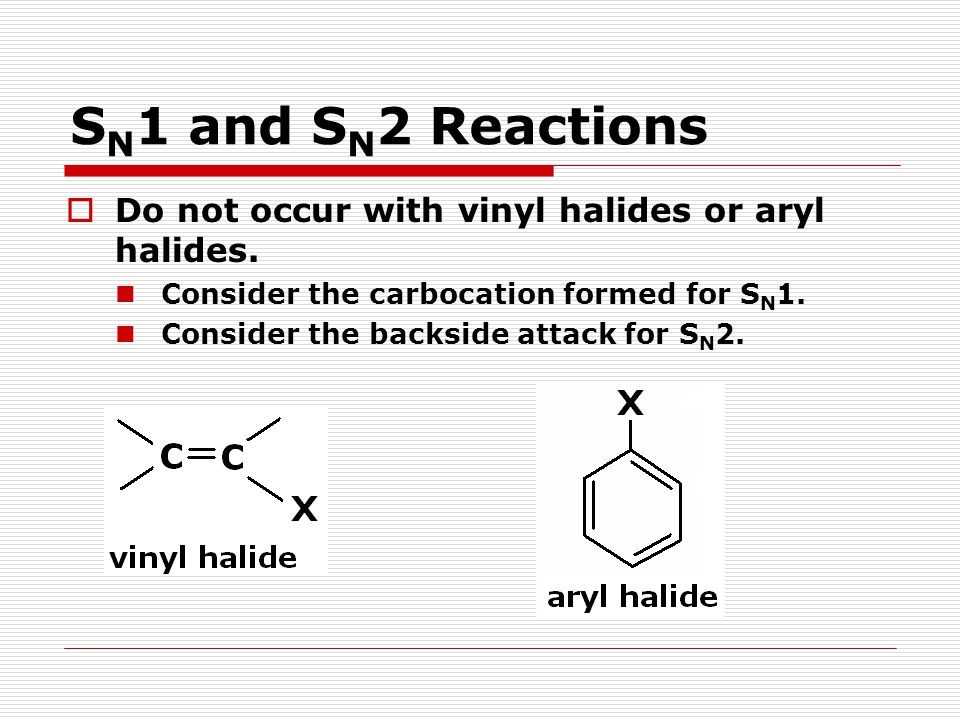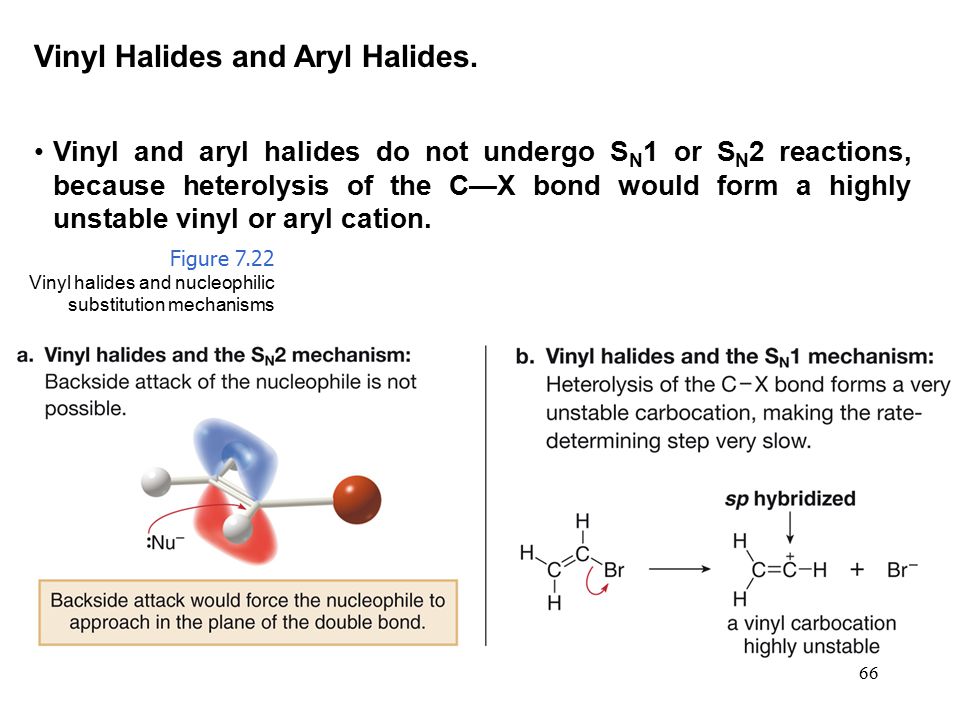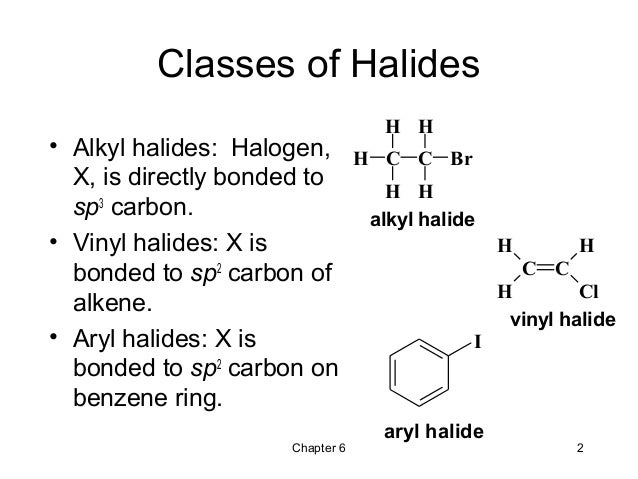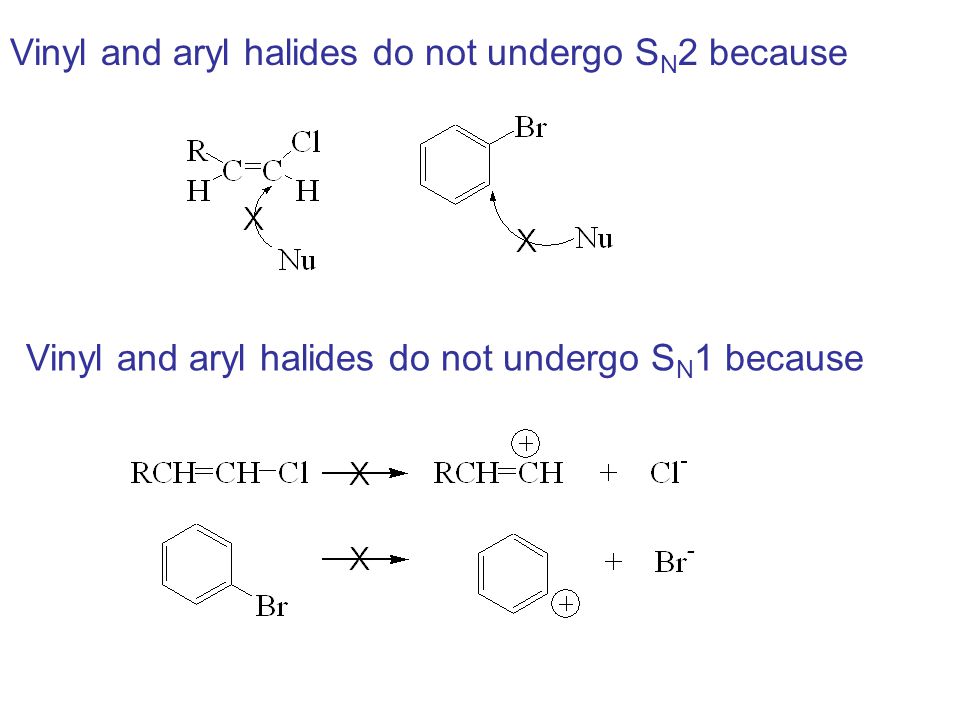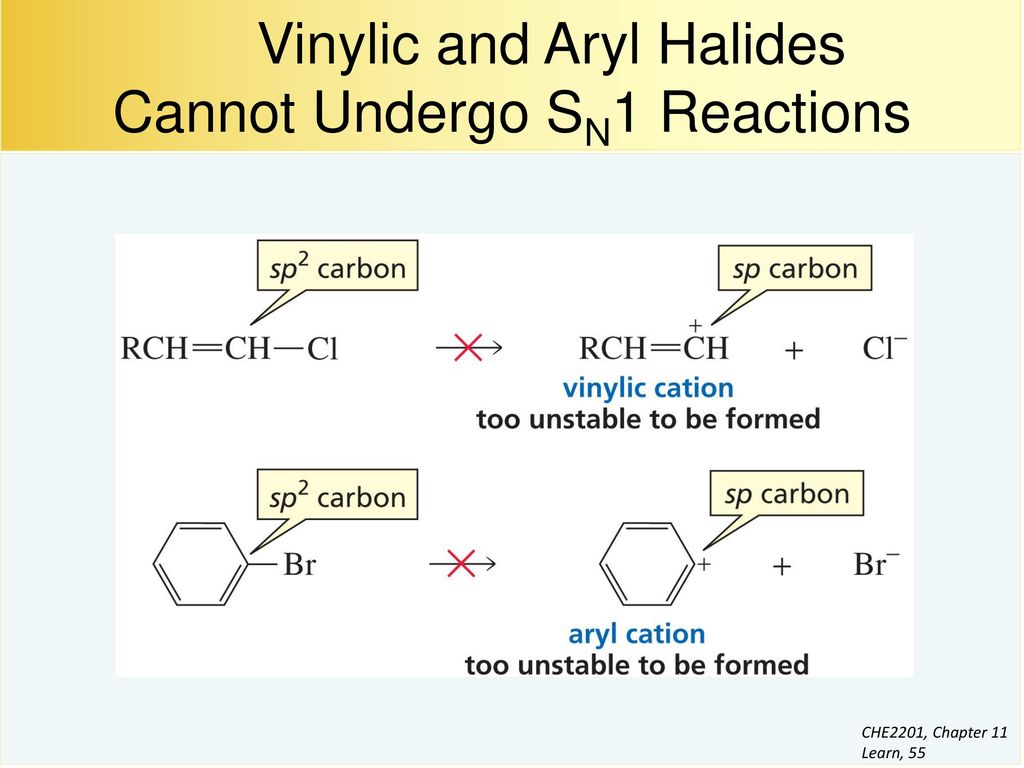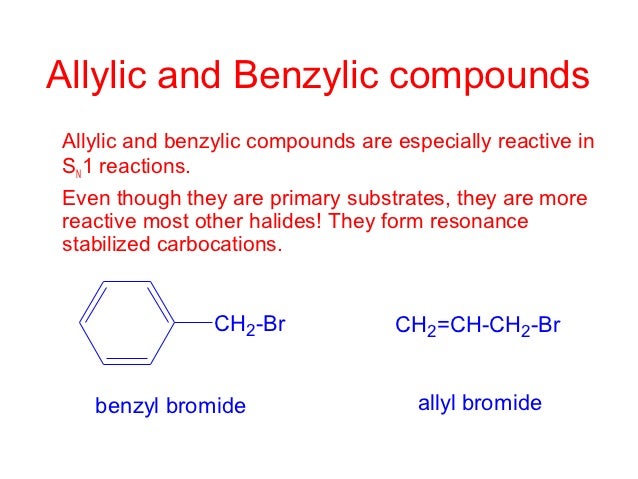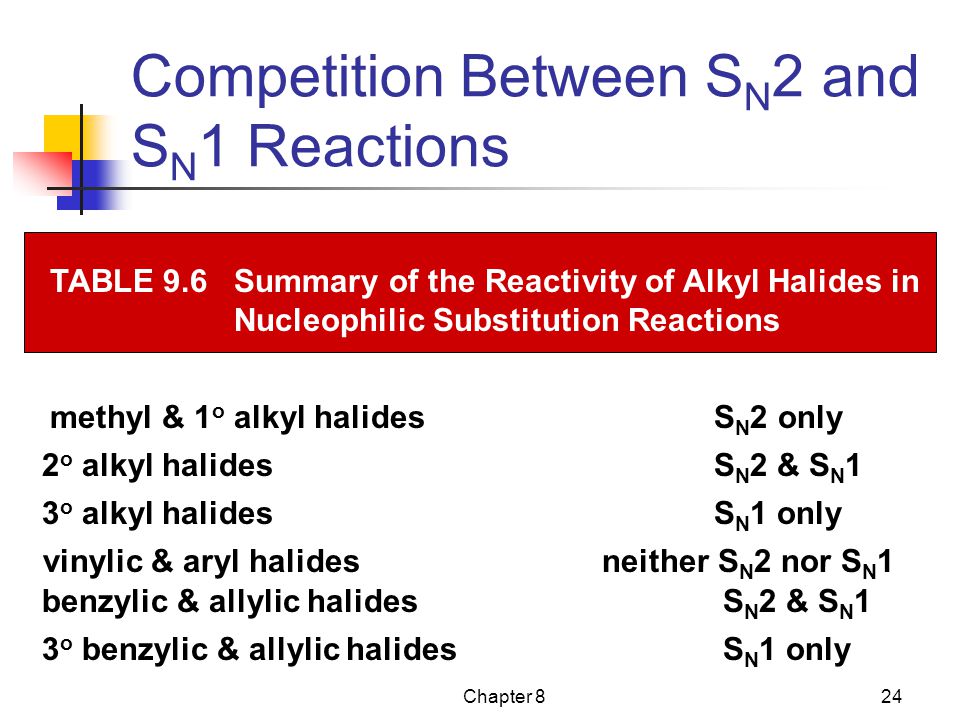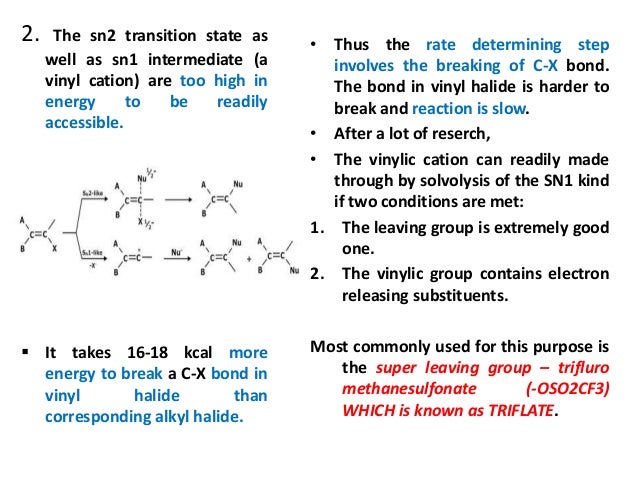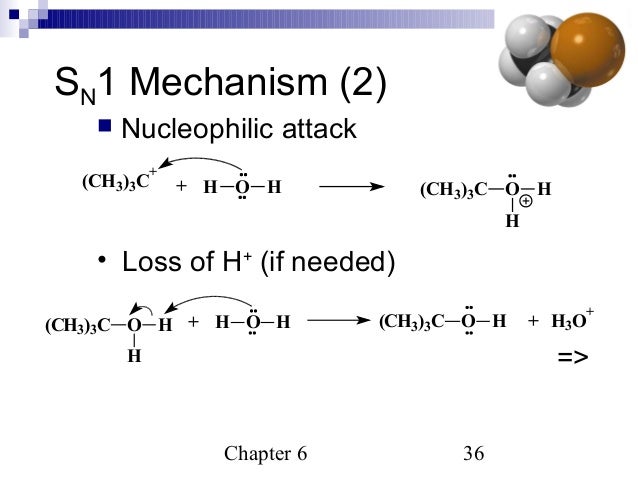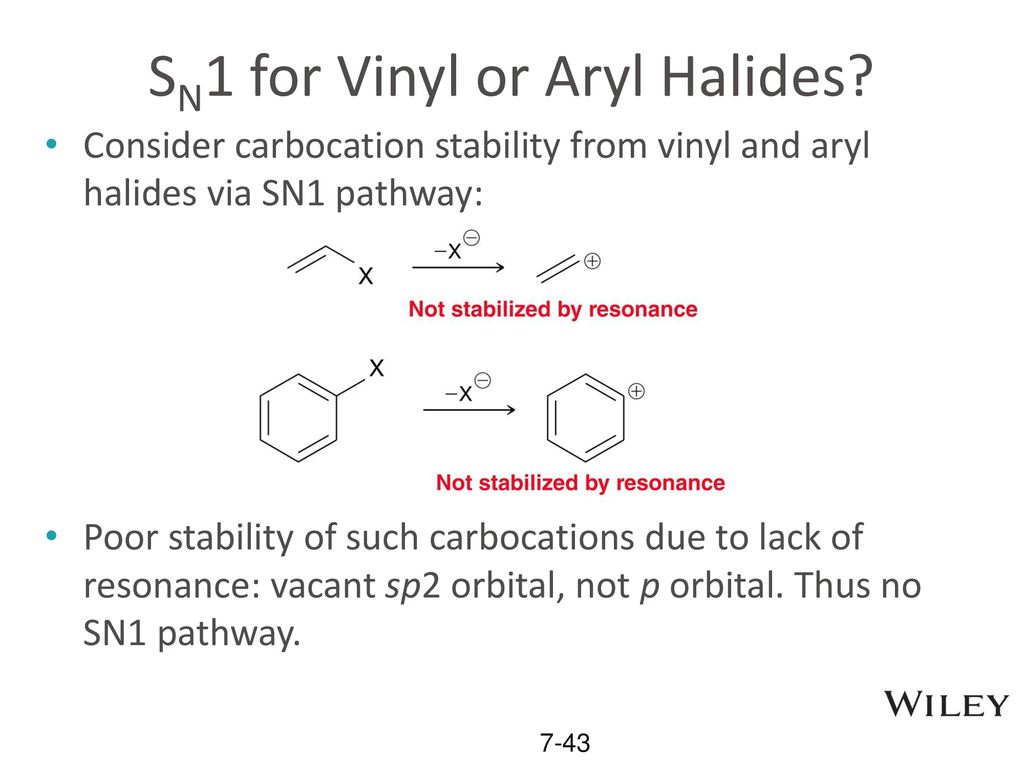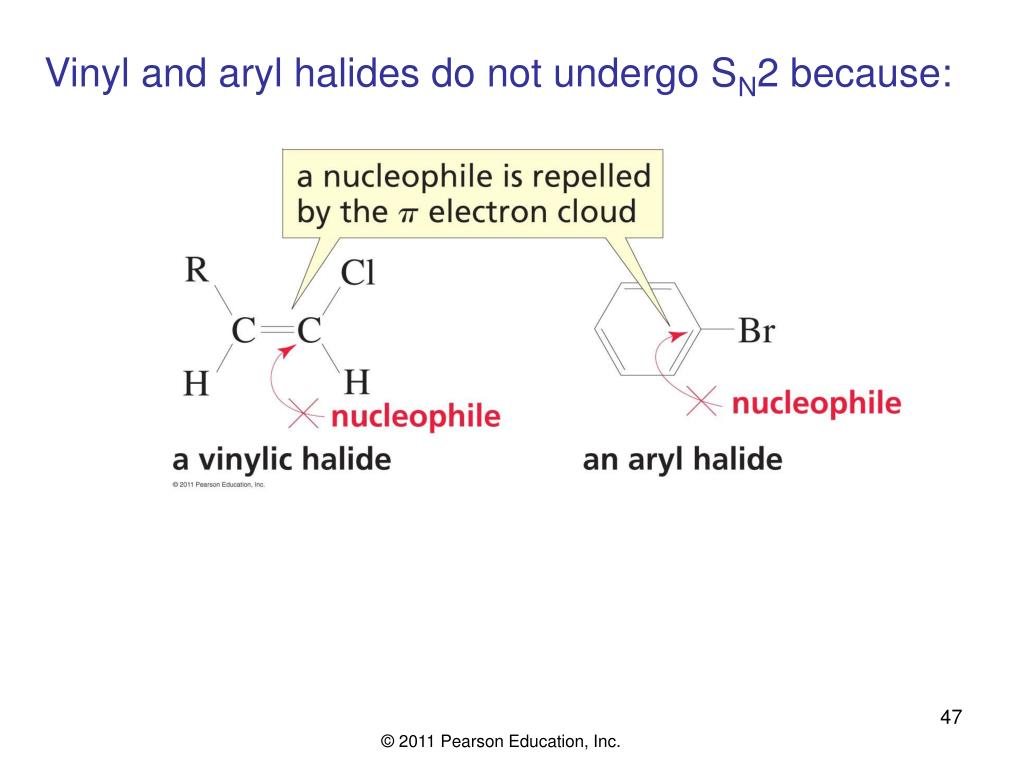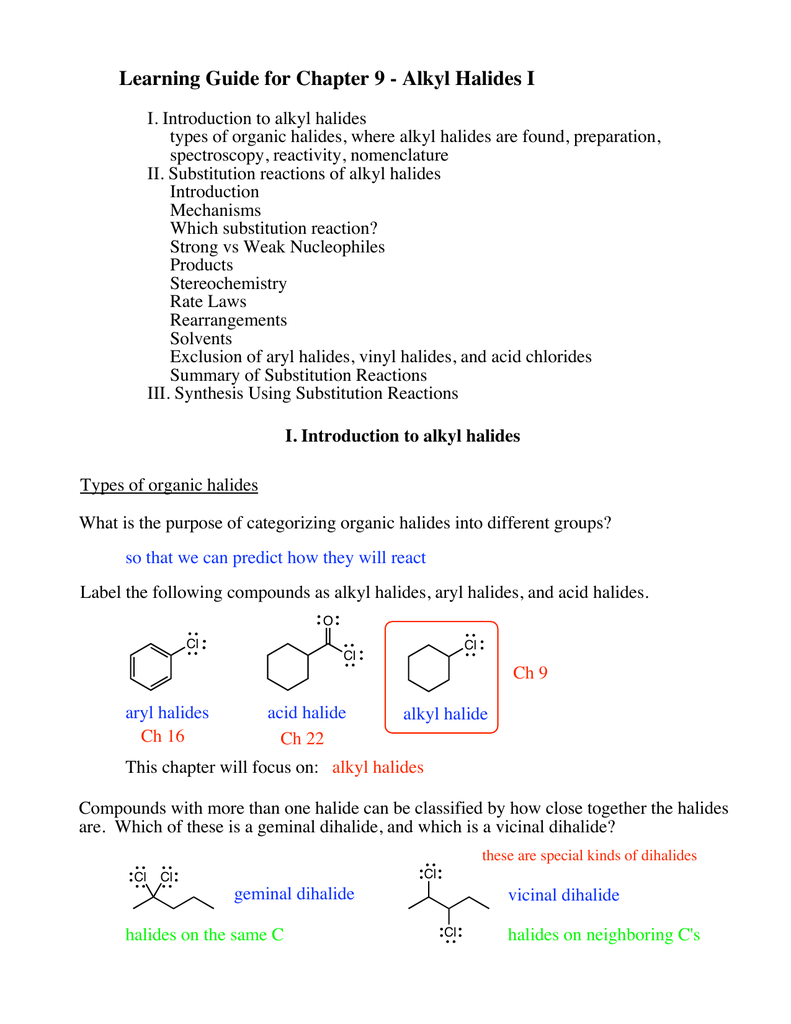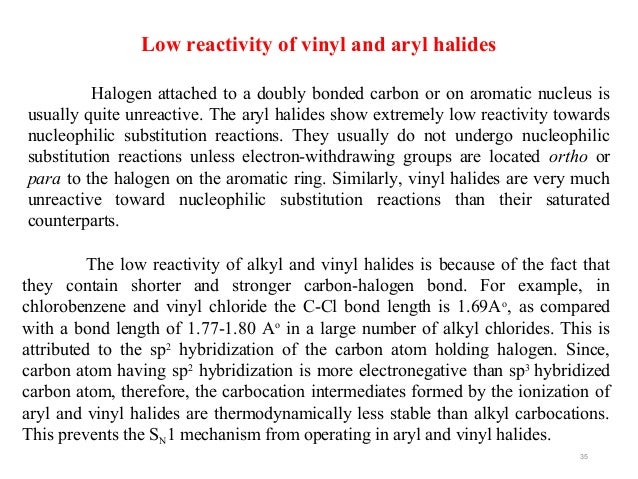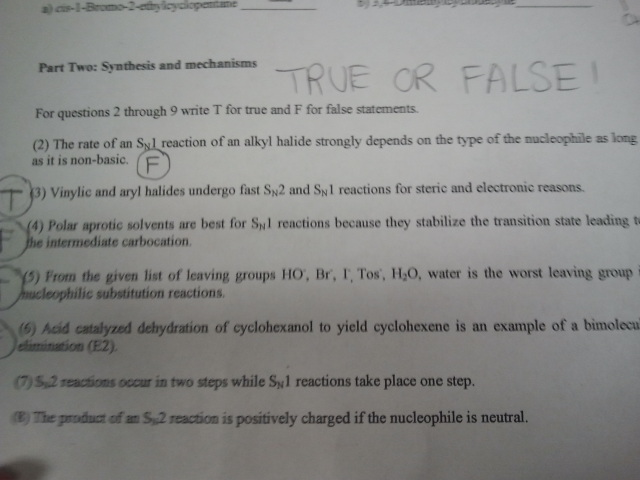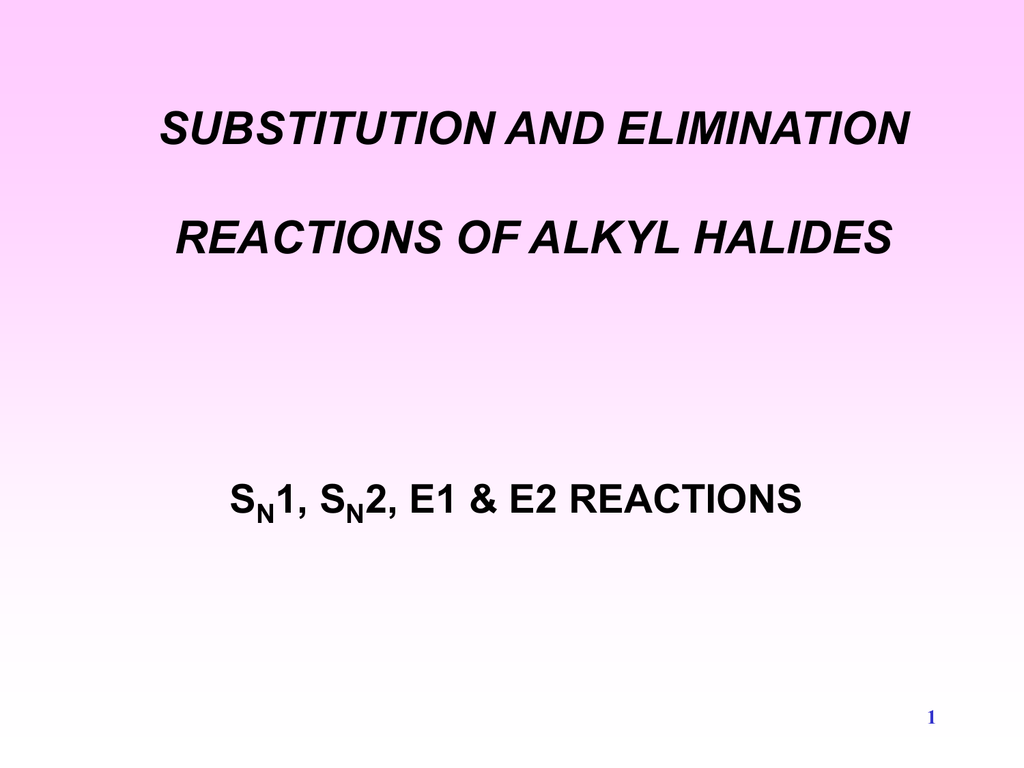Vinylic Halide Sn1
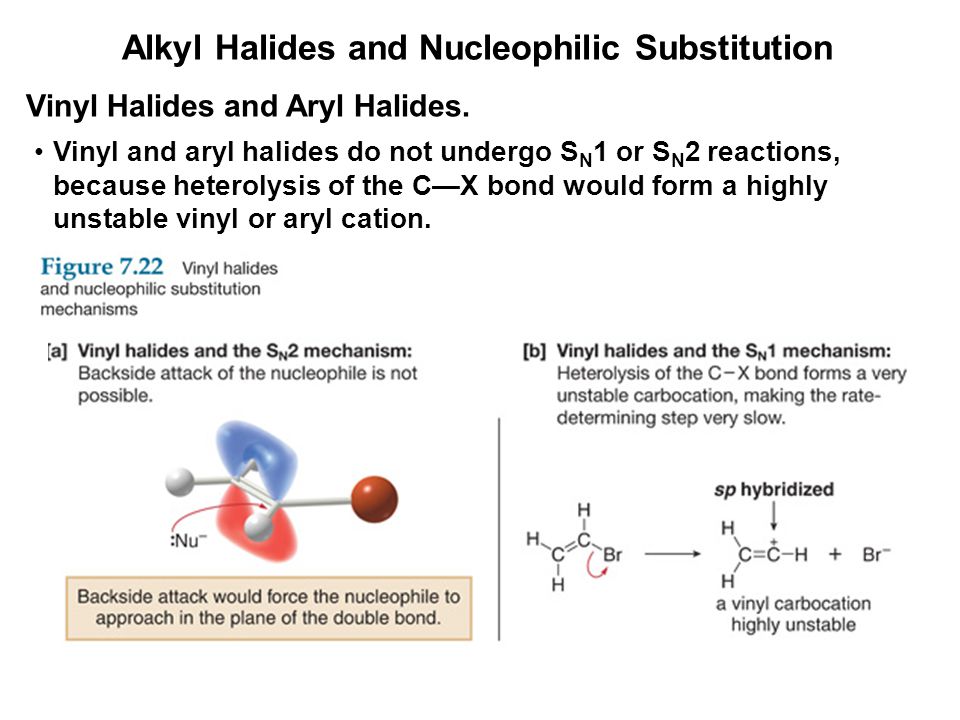
The picture below helps explain why this reaction is so much more difficult energetically more costly than the more common solvolysis of an alkyl halide.
Vinylic halide sn1. S n1 and mathrm s n2 for allylic and benzylic halides. The carbon halogen bond is shortened in aryl halides for two. A s math n math 2 mechanism is not favoured for 3 reasons. The resultant vinylic carbocations are actually stable enough to be observed using nmr spectroscopy.
Goc allylic vinylic benzylic positions carbocation stability. Solvolysis of vinyl halides in very acidic media is an example. In high dielectric ionizing solvents s n 1 and e1 products may be formed. In addition the carbon halogen bond is shorter and therefore stronger in aryl halides than in alkyl halides.
The substituents around a double bond are within the same plane therefore an s math n math 2 would give steric hindrance. The student asked why do vinyl halides not do the sn2 reaction my answer was that two reasons exist for why the vinyl halide will not react with a nucleophile. Today i got a good question i want to make a point of posting the best question from the day s teaching and my answer. Steric hindrance caused by the benzene ring of the aryl halide prevents s n 2 reactions.
To understand why vinylic and aryl halides are inert under s. Yes an alkyl halide can undergo both sn1 and sn2 reactions it just depends on what kind of alkyl halide it is. Ce etoh solvolysis of benzyl bromide is a known reaction and the hypothesis that it goes via mathrm s n1 is the most reasonable. E2 elimination will compete with substitution in 2º halides and dominate in the case of 3º halides.
Chemistry concept 2 058 views. Allyic vinylic benzylic aryl halides ncert duration. Vinylic and aryl halides however are virtually inert to the conditions that promote s n1 or e1 reactions of alkyl halides. Because the bond between the halogen and the carbon in the benzene ring aryl halide or a carbon participating in a double bond vinylic halide is much too strong stronger than that of an alkyl.
3º halides will probably give e2 elimination with nitrogen nucleophiles they are bases. Is an sn1 mechanism feasible with allylic or benzylic halides as substrates. Nitrogen and sulfur nucleophiles will give s n 2 substitution in the case of 1º and 2º halides. Certain vinylic halides can be forced to react by the s n1 e1 mech anism under extreme conditions but such reactions are relatively uncommon.
Likewise phenyl cations are unstable thus making s n 1 reactions impossible. A sn1 sn2 mechanism on vinyl halide would look like this.
